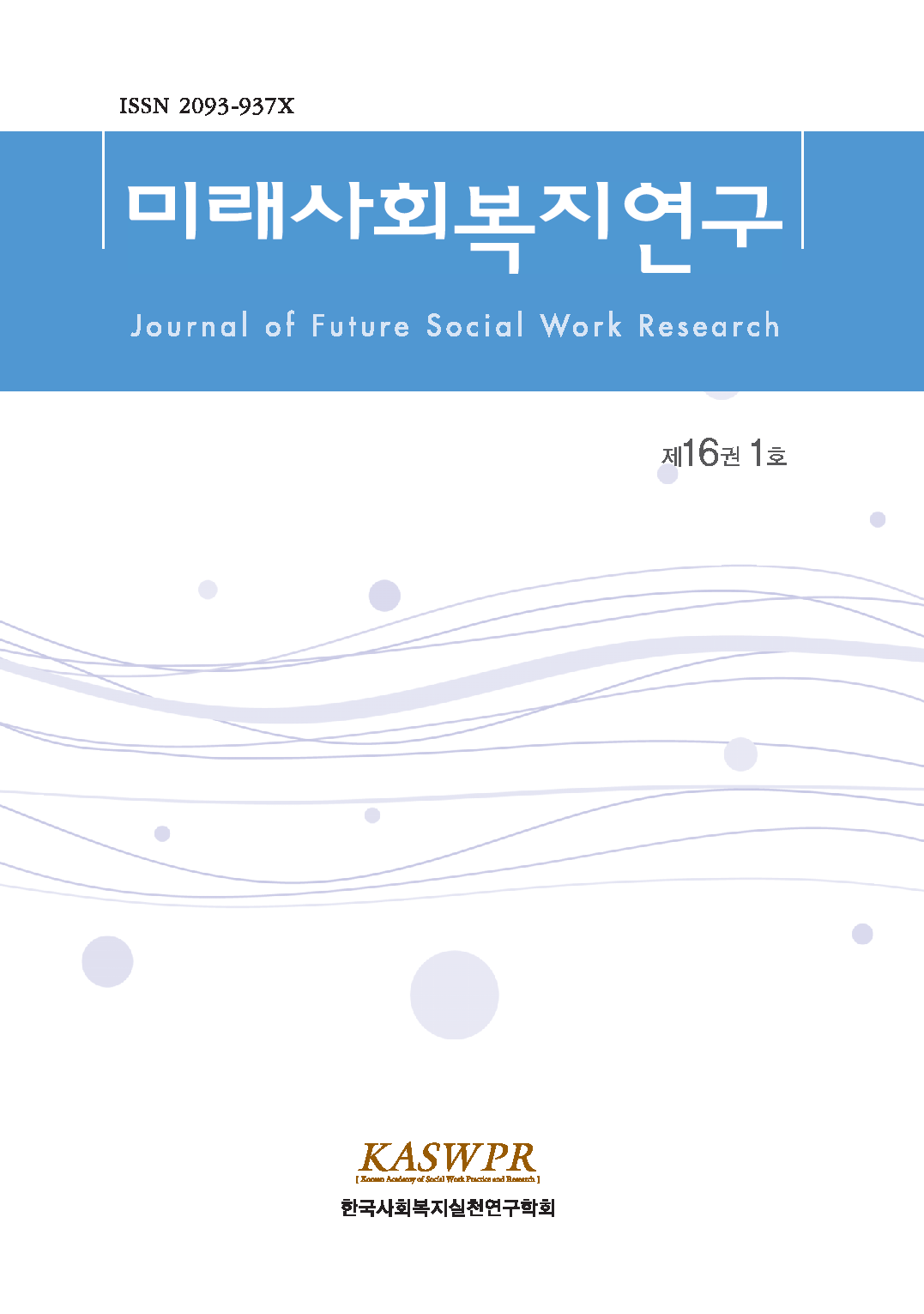중고령 장애인의 홀로 사는 삶: 중년기, 전기노년기, 후기노년기의 생활실태와 삶만족
Living Alone With Disability in Later Life: Life Conditions and Satisfaction in Midlife, Young-Old, and Old-Old Age
- 한국사회복지실천연구학회
- 미래사회복지연구
- 제16권 제1호
-
2025.04137 - 163 (27 pages)
- 110

국문초록 본 연구는 빠르게 증가하는 1인가구에 주목하며, 중고령 장애인 1인가구의생애주기별 생활실태와 삶만족 차이를 분석하였다. 이를 위해 2023년 18차 복지패널조사 데이터를 활용하여 장애인 1인가구 471명을 중년기(50-64세), 전기노년기(65-74세), 후기노년기(75세 이상) 세 집단으로 구분하여 분석하였다. 분석자료는 SPSS 25.0 통계프로그램을 이용하여 회귀분석을 실시하였다. 분석 결과, 첫째, 중고령 장애인 1인가구의 생애주기별로 주거생활(점유형태), 경제활동상태만족, 가족관계, 신체건강상태, 우울감의 차이가 확인되었다. 둘째, 장애인 1인가구 삶만족에 영향을 미치는 요인은 생애주기별로 차이가 있었는데, 중년기에는 경제활동상태만족, 신체건강상태, 전기노년기에는거주지(비수도권), 자아존중감, 후기노년기에는 성별(여성), 사회적 관계, 우울감, 자아존중감으로 나타났다. 연구결과는 생애 과정에서 삶만족에 영향을 미치는 다양한 요인들이 생애 과정에서 상이하게 나타난다는 점을 시사한다. 이러한 결과를 바탕으로 중고령장애인 1인가구의 생애주기별 삶만족을 제고하기 위한 정책적·실천적 함의를 제시하였다.
This study addressed the increasing prevalence of single-person households in Korea. The research focused on differences in living conditions and life satisfaction among middle-aged and old single-person households with disabilities. Households were segmented by life cycle stages. Data were obtained from the 18th Korea Welfare Panel Study, conducted in 2023. Four hundred and seventy-one single-person households with disabilities were categorized into three groups for analysis: middle-aged (50–64 years old), early old age (65–74 years), and late old age (≥75 years). Regression analysis was performed in the SPSS 25.0 statistical program. The results confirmed the existence of differences in living arrangements (i.e., occupancy type), satisfaction with economic activity status, family relationships, physical health, and depression among middle-aged and old single-person households with disabilities. Additionally, the factors that affect life satisfaction among single-person households with disabilities showed variance by life stage. Among middle-aged individuals, these factors were economic activity status satisfaction and physical health. In the early old-age group, the factors were place of residence (the non-Seoul metropolitan area) and self-esteem. In the late old-age group, gender (female), social relationships, depression, and self-esteem were significant life satisfaction predictors. These findings underscore the various factors that affect life satisfaction at different life cycle stages. Based on these findings, this paper suggests policy and practice recommendations aimed at increasing life satisfaction among middle-aged and old single-person households with disabilities.
1. 서론
2. 이론적 배경
3. 연구방법
4. 분석결과
5. 결론 및 제언
참고문헌
(0)
(0)